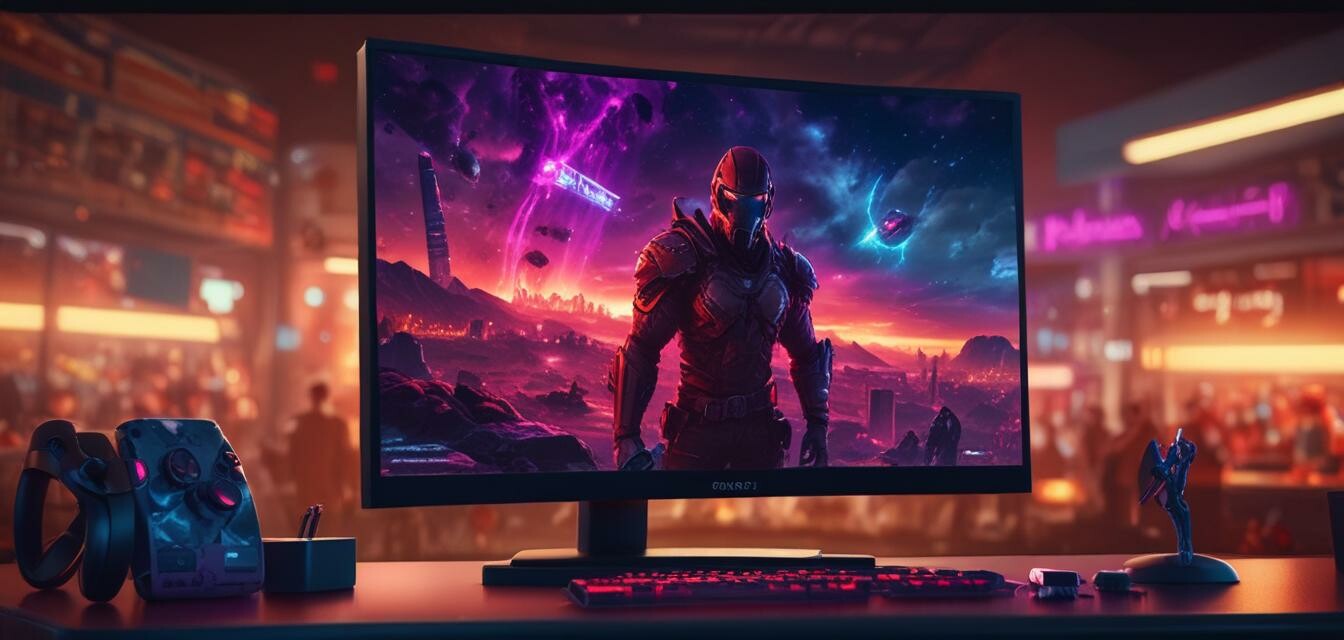
Top considerations for selecting a G-Sync OLED monitor
Key Takeaways
- Ensure G-Sync compatibility with your graphics card.
- Look for high refresh rates for smoother gameplay.
- Consider the size and resolution to suit your gaming setup.
- Evaluate additional features like HDR for a richer visual experience.
- Pay attention to connectivity options for seamless integration.
Choosing the right G-Sync OLED monitor can significantly enhance your gaming experience. With vibrant colors, deep contrasts, and fluid motion, these monitors are designed to elevate gameplay to the next level. However, with so many options available, it’s essential to know what specific features you should prioritize for optimal performance. Here, we'll explore the critical factors to consider in your selection process.
Understanding G-Sync Technology
G-Sync is a technology developed by NVIDIA that synchronizes the monitor’s refresh rate with the graphics card’s frame rate to eliminate screen tearing and reduce stuttering. Here are some key aspects to understand:
- Compatibility: Ensure your graphics card supports G-Sync for proper functioning.
- Variable Refresh Rate: G-Sync enables smoother transitions by adjusting the display’s refresh rate dynamically.
- Lower Input Lag: This technology minimizes latency, giving you a more responsive gaming experience.
Key Features to Look For
1. Monitor Size and Resolution
When selecting your OLED monitor, consider both the size and resolution:
| Size | Resolution | Best Use |
|---|---|---|
| 27 inches | 1440p | Ideal for competitive gaming |
| 32 inches | 4K | Great for immersive experiences |
| Ultrawide (34 inches) | UltraWide QHD | Enhances the field of view in racing and simulation games |
2. Refresh Rate and Response Time
The refresh rate impacts how often the image on your screen is updated. A higher refresh rate leads to smoother gameplay:
- Look for monitors offering at least 144Hz for fast-paced games.
- Response times of 1ms to 3ms are optimal to reduce motion blur.
- Consider variable refresh rates that complement fast frame delivery.
3. HDR Support
High Dynamic Range (HDR) provides a broader color range, enhancing brightness and contrast:
- Check for HDR compatibility for a more immersive visual experience.
- Look for monitors that meet the DisplayHDR certification standards.
Additional Features to Consider
Besides the core specifications, there are other features that can enhance your experience:
- Adaptive Sync Technologies: Ensure the monitor supports G-Sync for smooth gameplay.
- Built-in Speakers: Some monitors come with integrated sound systems, saving desktop space.
- Connectivity Options: Look for multiple HDMI and DisplayPort connections for flexibility.
Setting Up Your G-Sync OLED Monitor
Once you have selected the right monitor, setting it up properly is vital:
- Connect via the recommended DisplayPort or HDMI cables.
- Ensure you have the latest graphics driver installed.
- Adjust the settings in the NVIDIA Control Panel for G-Sync functionality.
Conclusion
Choosing the right G-Sync OLED monitor can elevate your gaming experience, providing enriched visuals and smooth gameplay. By considering factors like compatibility, performance, and additional features, you can make an informed choice that suits your gaming style.
Pros
- Enhanced gaming experience with reduced tearing and stuttering.
- Rich colors and deeper blacks due to OLED technology.
- High refresh rates lead to smooth gameplay.
Cons
- Typically higher price point compared to standard monitors.
- G-Sync compatibility may require specific graphics cards.
Explore More
If you're interested in expanding your knowledge or options, check out our related articles: